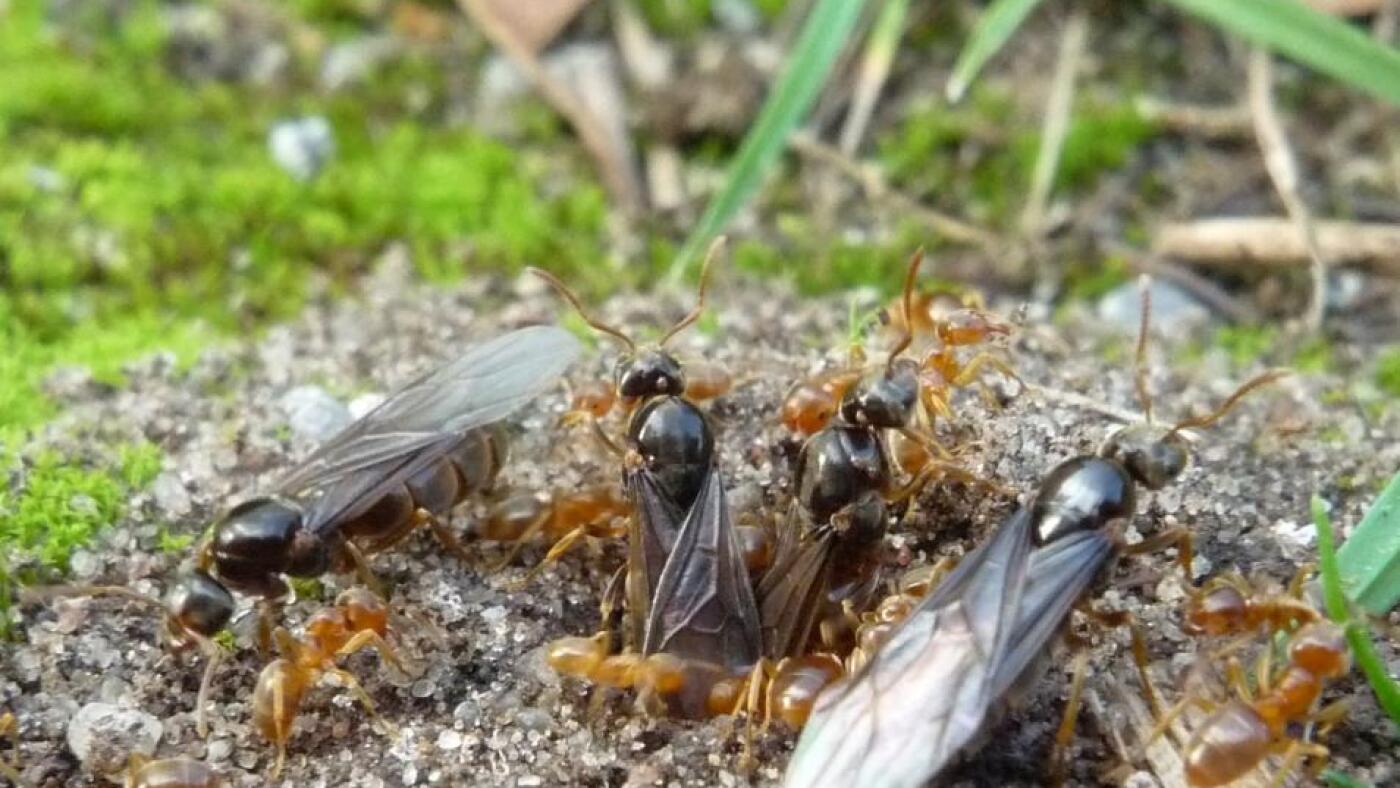
"The role of queen is paramount in an ant colony; the queen produces all the eggs, while the workers take care of her. After a colony has been around awhile and gotten bigger, however, it will start to produce some females that are capable of reproduction. These females fly away, in order to establish new colonies and their own reigns."
"The founding of an ant colony by a would-be queen, however, is a precarious, fragile business. The female ant faces a lot of danger as she leaves the protection of the nest and lays the eggs that will produce her first group of workers. "Even one small mistake, or one bad luck event that kills off your workforce, can mean the end of the colony," says Erik Frank, an ant expert at the University of Wurzburg in Germany."
"So some species have evolved to have a canny strategy their females find a colony, knock the existing queen off her perch and take her place. That lets them enjoy the care and protection of a ready-made workforce while laying the eggs needed to slowly build up their own genetically-related societies. "It's very enticing to do it, because the hardest part for the colony is to build up their city, build up that colony," says Frank."
Some ant species use chemical mimicry to infiltrate established colonies and manipulate workers into murdering the resident queen, enabling the intruder to usurp reproductive control. The queen is the sole egg-layer and workers care for her offspring, so replacing a queen grants immediate workforce and protection. Founding a new colony independently is highly risky; a solitary foundress faces predation and workforce collapse. Infiltration reduces those founding costs by exploiting an existing worker population while laying eggs to gradually shift colony genetics. This strategy combines chemical deception, regicide, and social takeover to efficiently establish reproductive dominance.
Read at www.npr.org
Unable to calculate read time
Collection
[
|
...
]